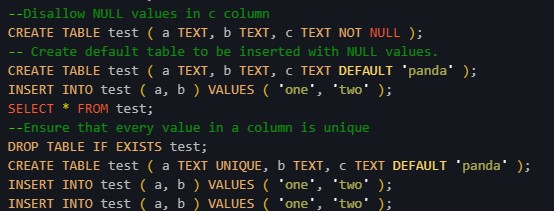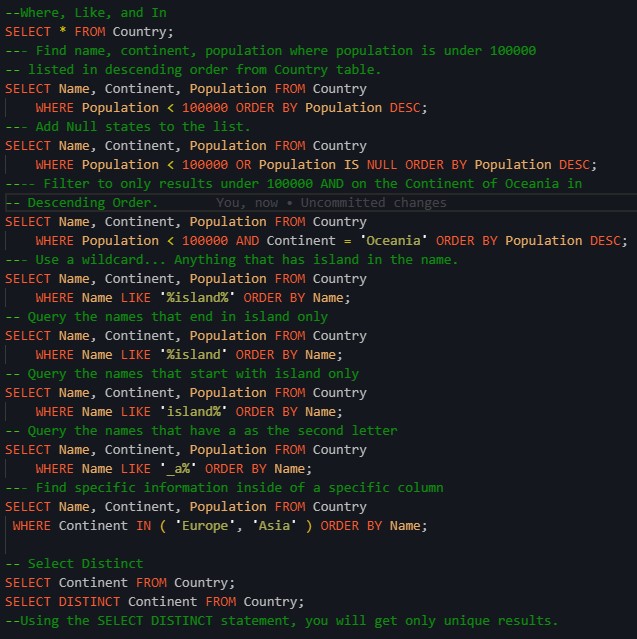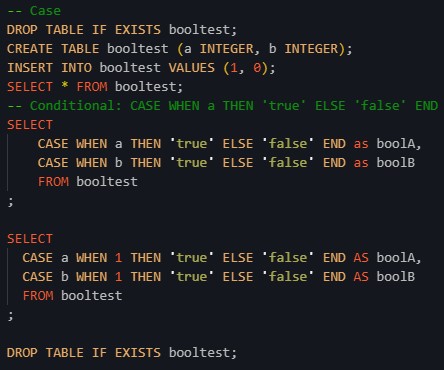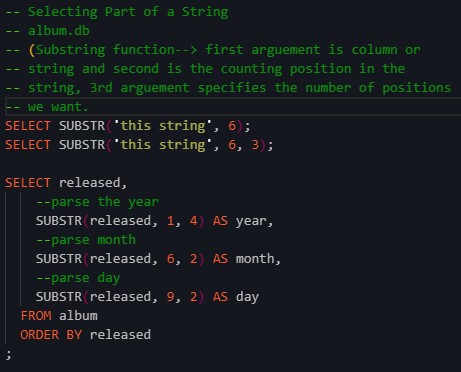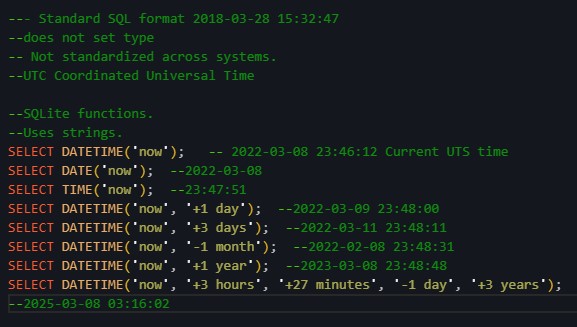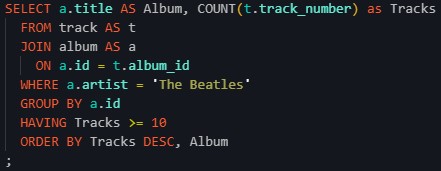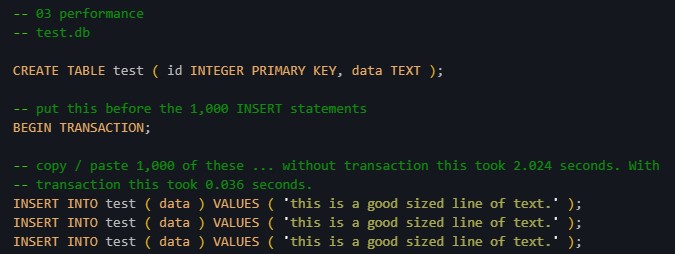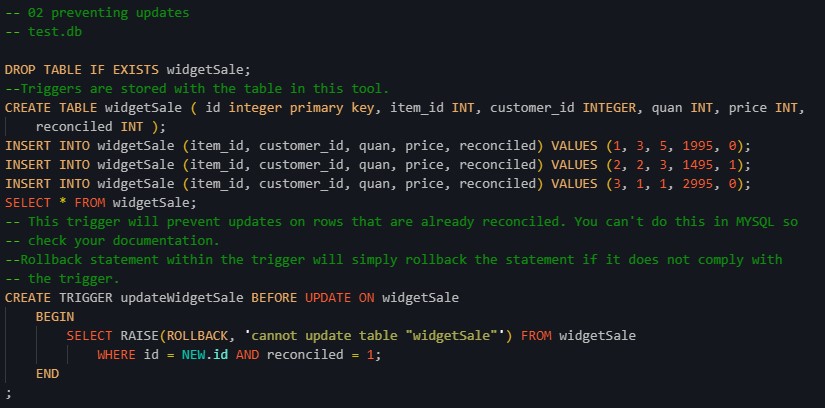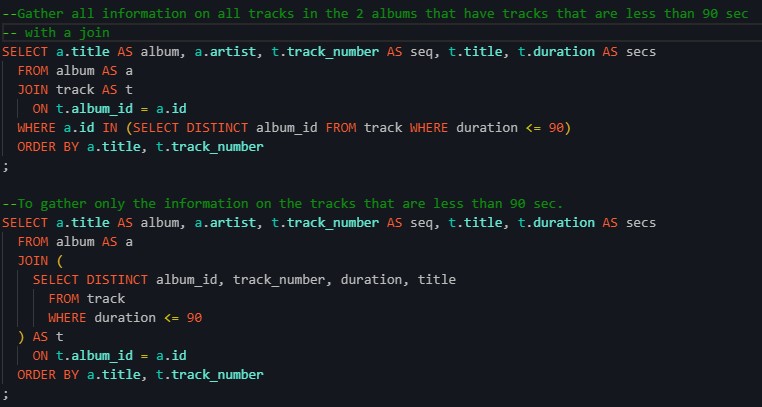SQL_Fun
Learning SQLiteStudio and SQLite
This project is maintained by SColson82
SQL_Fun
From the LinkedIn Learning Course “SQL Essential Training”
Objective: Learn a new SQL tool (SQLiteStudio) and further familiarize myself with essential SQLite functions.
Skills Covered:
- How DataBases are organized
- Selecting rows and columns
- Creating new tables
- Inserting and updating data
- Sorting and filtering
- Accessing related tables with JOIN
- Working with strings
- Understanding numeric types
- Using aggregate functions and transactions
- Automating data with triggers
- Creating views
- Using CRUD functions
Fundamental Concepts:
- CREATE TABLE
- INSERT INTO
- DROP TABLE / DROP TABLE IF EXISTS
- ID
- NULL
- SELECT
- DELETE
- Constraints: UNIQUE
- ALTER TABLE
- WHERE, LIKE, IN
- SELECT DISTINCT
- ORDER BY
- CASE WHEN
String Functions:
- SINGLE QUOTES
- CONCATENATION
- LENGTH
- SUBSTR
- TRIM
- UPPER/LOWER
Numeric Types:
DATE/TIME:
Aggregations:
- HAVING clause opperates on aggregated data
- WHERE is used before a GROUP BY, HAVING is used after GROUP BY and before ORDER BY
- AGGREGATE functions include but are not limited to: COUNT, AVG, MIN, MAX, SUM.
Transactions:
- Transactions are a group of operations that are handled as one unit of work. They improve performance.
- Transactions can add information to one table and remove the same information from another table at the same time.
- ROLLBACK is used to undo a transaction before it is completed in the event of an error.
- This insert statement adding 1000 lines to a table required 2.024 seconds to run without transaction. With transaction it required 0.036 seconds.
Triggers
- Triggers are operations that are automatically performed when a specified database event occurs.
- Triggers can also be used to prevent unwanted updates.
- They can be used to add a timestamp when tables are updated.
Subselects / Nested Queries
Views:
- Views are used to create a copy with the intent of data manipulation and exploration.


